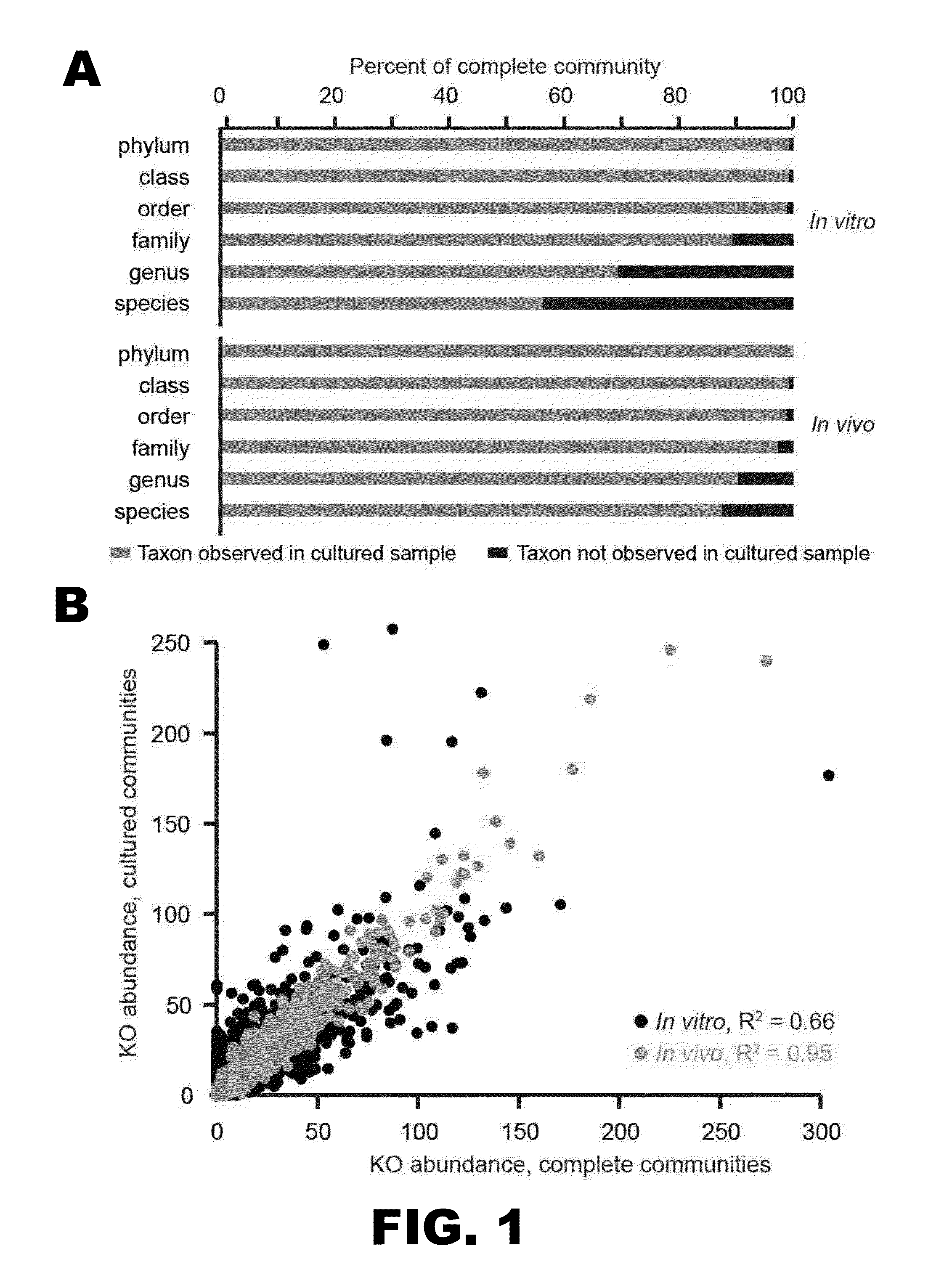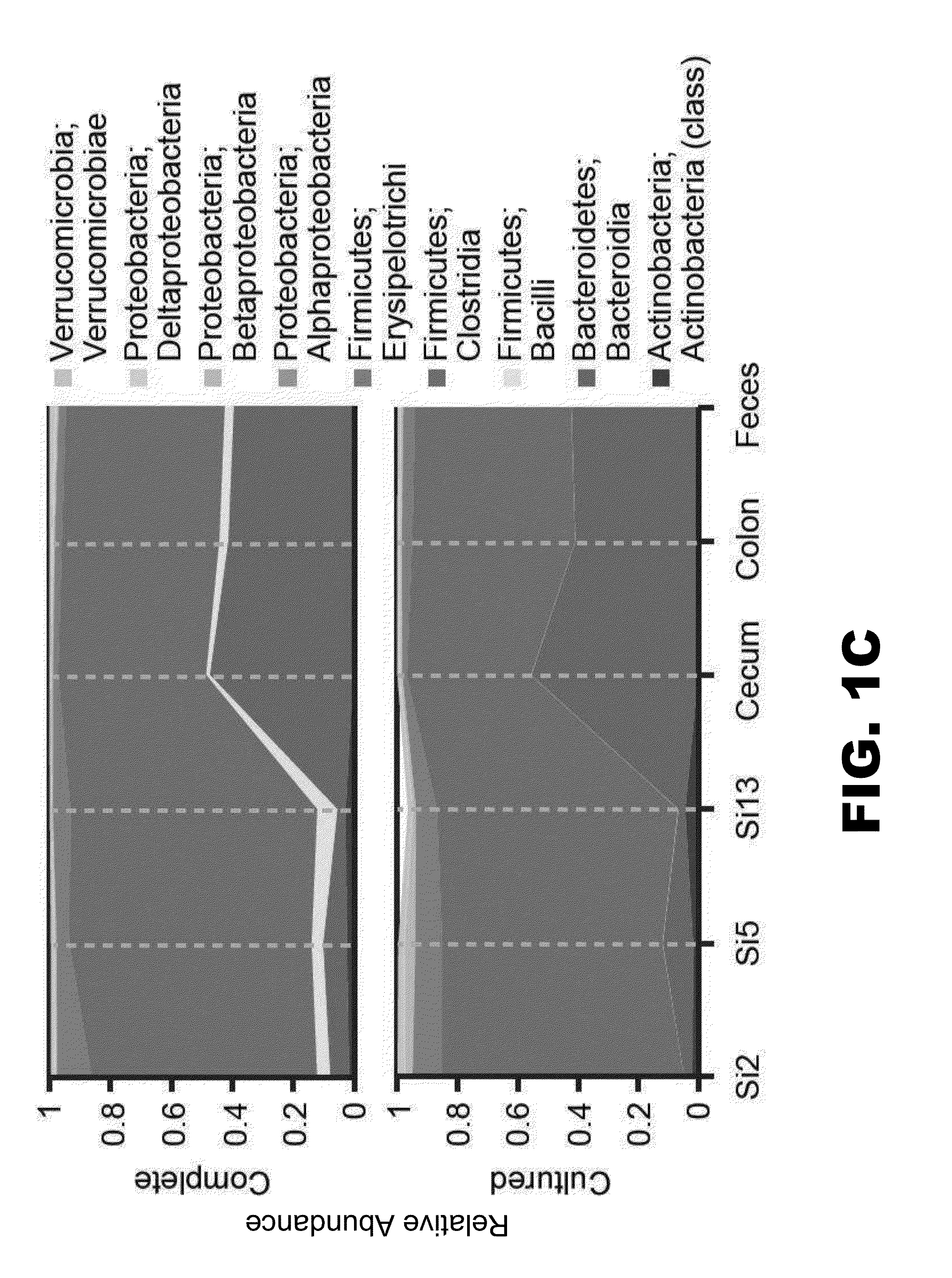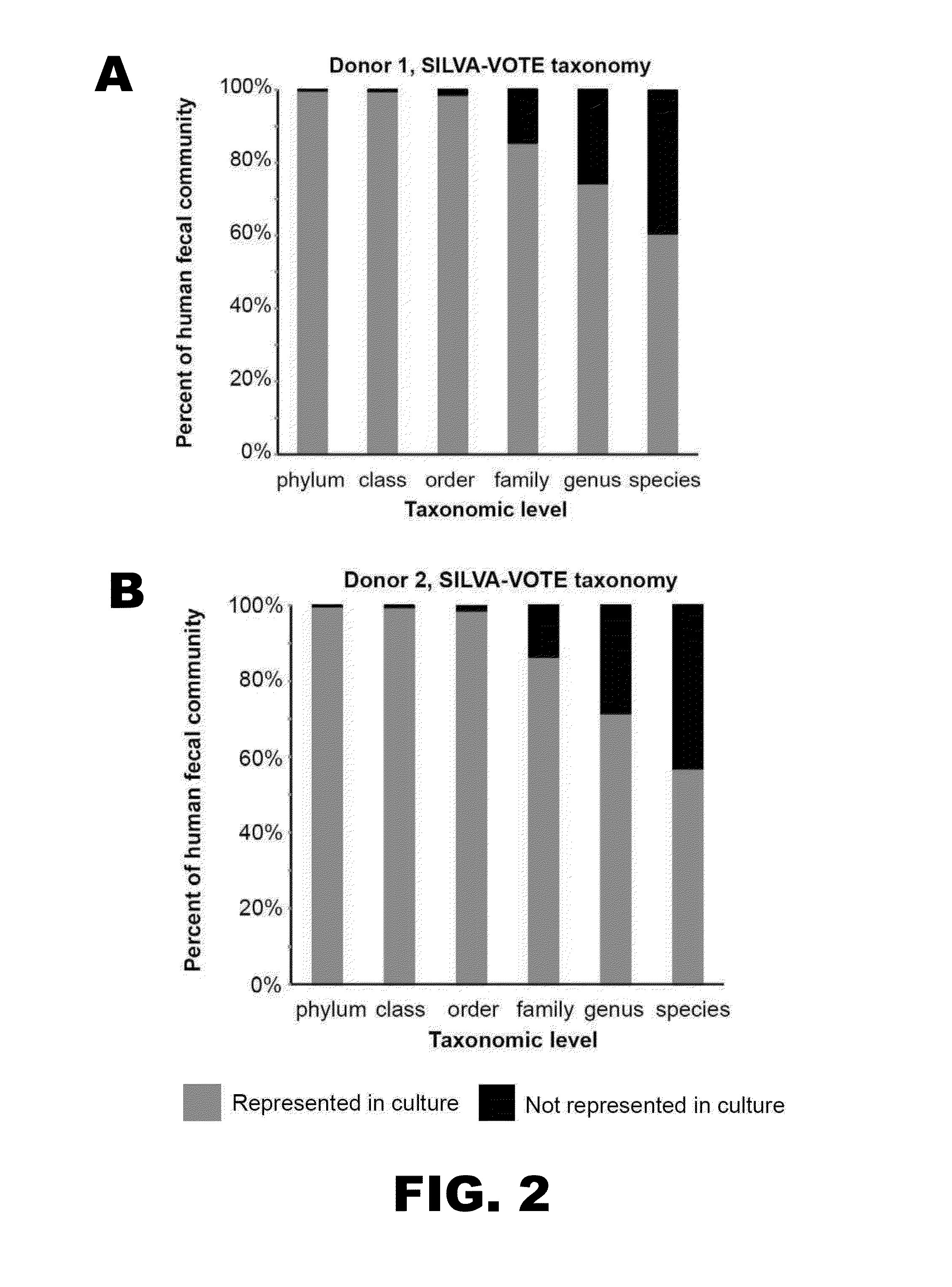Cultured collection of gut microbial community
ulture technology, applied in the field of cultured collection of gut microbial communities, can solve the problems of difficult at best to determine the effect of a perturbation on a gut microbial community, and may well be impossible to dissect the functional interactions between microbial communities and their environmental or animal habitats, and achieve the effect of reducing the number of strains, and improving the quality of li
- Summary
- Abstract
- Description
- Claims
- Application Information
AI Technical Summary
Benefits of technology
Problems solved by technology
Method used
Image
Examples
examples
[0115]The following examples illustrate various embodiments of the invention. It should be appreciated by those of skill in the art that the techniques disclosed in the examples that follow represent techniques discovered by the inventors to function well in the practice of the invention. Those of skill in the art should, however, in light of the present disclosure, appreciate that many changes can be made in the specific embodiments that are disclosed and still obtain a like or similar result without departing from the spirit and scope of the invention, therefore all matter set forth or shown in the accompanying drawings is to be interpreted as illustrative and not in a limiting sense.
examples 1-9
Introduction to Examples 1-9
[0116]Efforts to dissect the functional interactions between microbial communities and their environmental or animal habitats are complicated by the long-standing observation that, for many of these communities, the great majority of organisms have not been cultured in the laboratory. Methodological differences between culture-independent and culture-based approaches have contributed to the challenge of deriving a realistic appreciation of exactly how much discrepancy exists between the culturable components of a microbial ecosystem and total community diversity. (Table 1 gives examples of these methodological differences.)
[0117]The largest microbial community in the human body resides in the gut: Its microbiome contains at least two orders of magnitude more genes than are found in our Homo sapiens genome. Culture-independent metagenomic studies of the human gut microbiota are identifying microbial taxa and genes correlated with host phenotypes, but mecha...
example 1
Estimating the Abundance of Readily Cultured Bacterial Phylotypes in the Distal Human Gut
[0118]To estimate the abundance of readily cultured bacterial phylotypes in the distal human gut, primers were used to amplify variable region 2 (V2) of bacterial 16S ribosomal RNA (rRNA) genes present in eight freshly discarded fecal samples obtained from two healthy, unrelated anonymous donors living in the United States (n=1 complete sample per donor at t=1, 2, 3, and 148 d). Amplicons were subjected to multiplex pyrosequencing, and the results were compared with those generated from DNA prepared from ˜30,000 colonies cultured from each sample, under strict anaerobic conditions and harvested after 7 d at 37° C. on a rich gut microbiota medium (GMM) composed of commercially available ingredients (“cultured” samples; details of the culturing technique are given in Materials and Methods, and a description of GMM is given in Table 2). The resulting 16S rRNA datasets were de-noised to remove seque...
PUM
| Property | Measurement | Unit |
|---|---|---|
| phylotopic composition | aaaaa | aaaaa |
| proteome composition | aaaaa | aaaaa |
Abstract
Description
Claims
Application Information
 Login to View More
Login to View More - R&D
- Intellectual Property
- Life Sciences
- Materials
- Tech Scout
- Unparalleled Data Quality
- Higher Quality Content
- 60% Fewer Hallucinations
Browse by: Latest US Patents, China's latest patents, Technical Efficacy Thesaurus, Application Domain, Technology Topic, Popular Technical Reports.
© 2025 PatSnap. All rights reserved.Legal|Privacy policy|Modern Slavery Act Transparency Statement|Sitemap|About US| Contact US: help@patsnap.com



